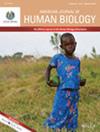Black South Africans Who Migrate Away From Their Rural Homes and Their Chances of Having Abdominal Obesity
Abstract
Introduction
South Africa is experiencing a heterogeneous and rapid nutrition transition. Rural-origin Black South Africans frequently migrate to access employment opportunities in urbanized areas, which could place individuals at risk for obesity due to accompanying dietary and lifestyle changes.
Methods
We utilize longitudinal data—four waves from 2018 to 2022—with detailed internal migration and health information, and negligible participant attrition from the Migrant Health Follow-Up Study, with origin households located in rural northeast South Africa—Agincourt. We employ lagged-dependent variable regressions to test whether (1) the number of waves one is away from their rural home (0–4) and (2) residing in a densely populated urban area (Gauteng province) relative to other locations or remaining in Agincourt over the four waves, are differentially associated with having abdominal obesity, indicated by the preferable measure of the waist circumference-to-height ratio (WHtR), at Wave 4—after adjusting for Wave 1 obesity and other variables, including fast food consumption. WHtR is operationalized as a binary indicator of abdominal obesity as well as a standardized, continuous one. Our analytic sample includes women (N = 895) and men (N = 1010).
Results
Our results show that internal migrant women and men face higher chances of having abdominal obesity at Wave 4 than their nonmigrant counterparts. For men, both the number of waves as a migrant and ever migrating to Gauteng are consistently, strongly associated with the chances of having abdominal obesity—considerably more so than women.
Conclusion
As obesity rates rise throughout urbanizing low- and middle-income countries, this research emphasizes the importance of understanding the correlates of the risks of obesity that internal migrants will face.

 求助内容:
求助内容: 应助结果提醒方式:
应助结果提醒方式:


